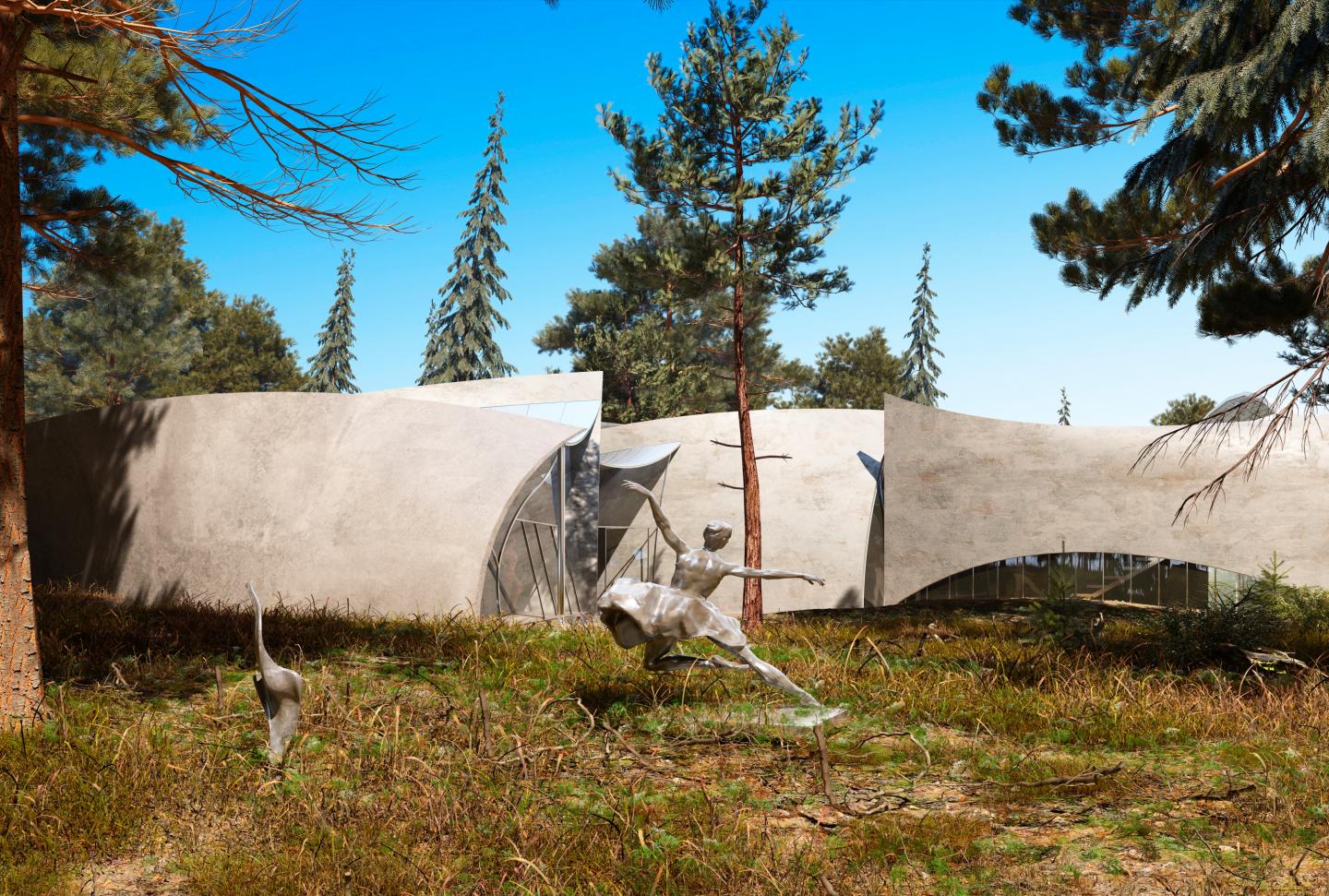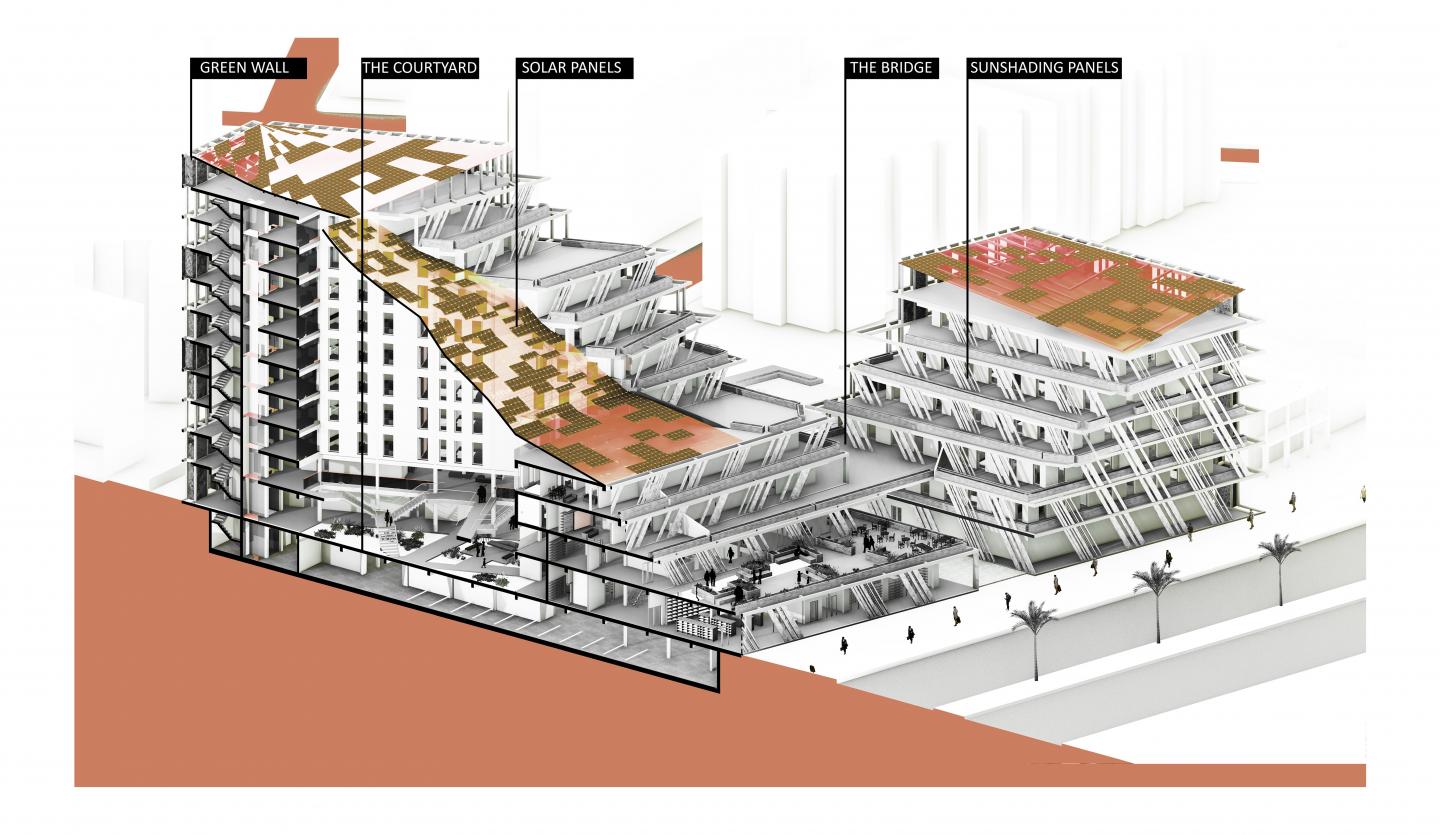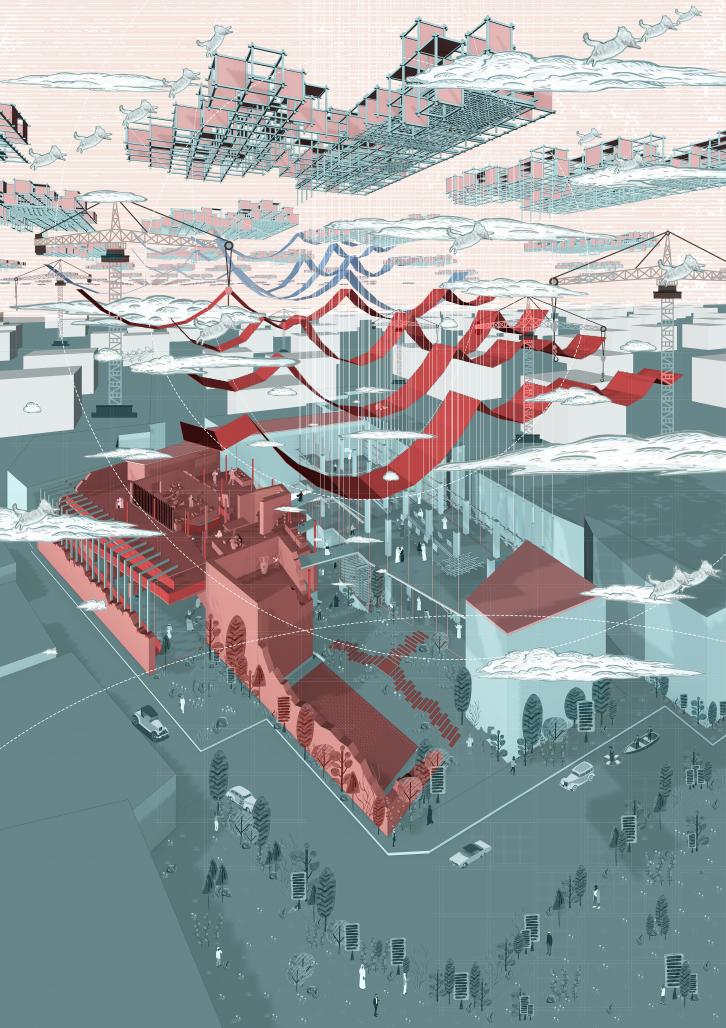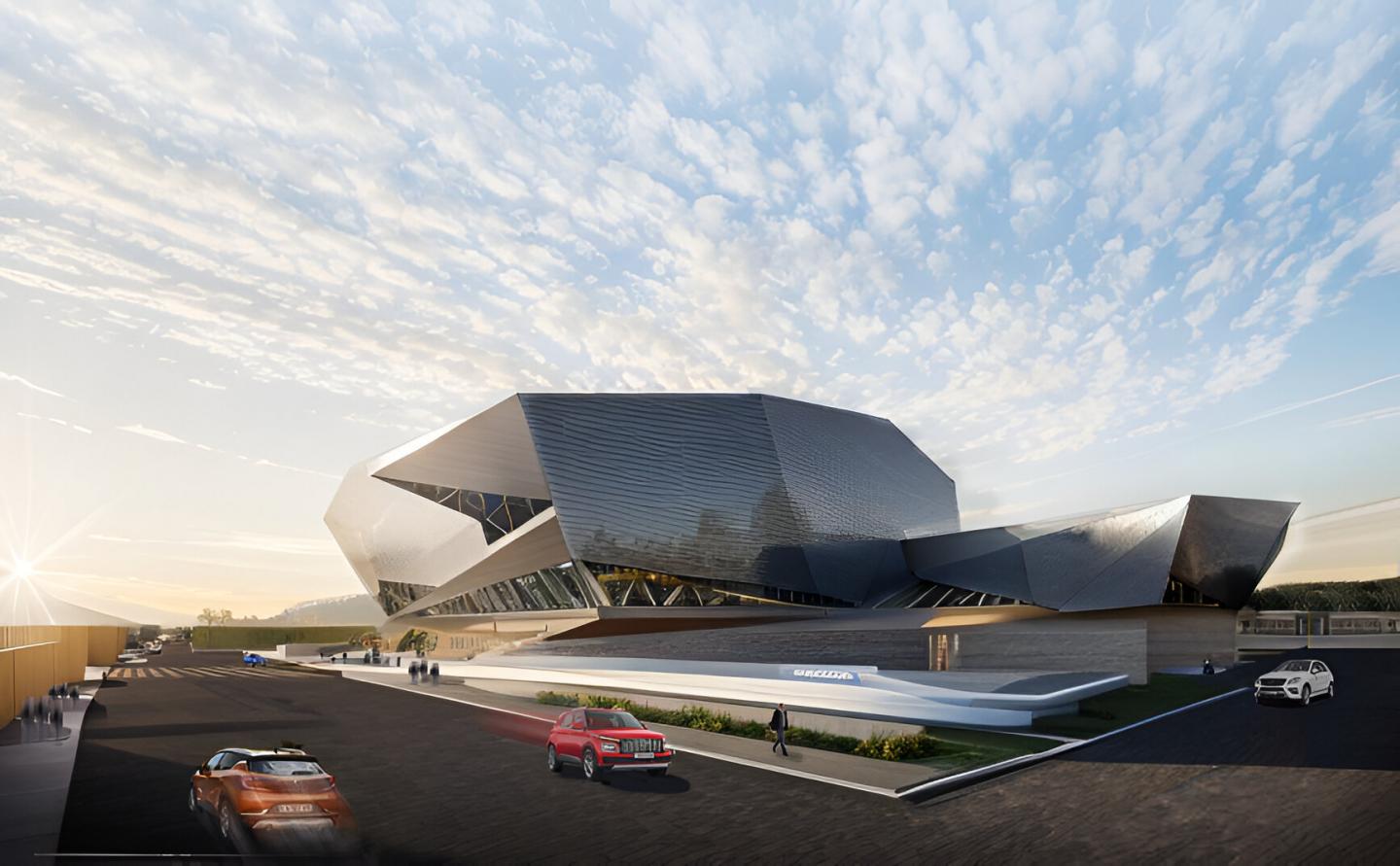World Architecture Awards 10+5+X Submissions
World Architecture Awards Submissions / 49th Cycle
Vote button will be active when the World Architecture Community officially announces the Voting period on the website and emails. Please use this and the following pages to Vote if you are a signed-in registered member of the World Architecture Community and feel free to Vote for as many projects as you wish.
How to participate
WA Awards Submissions
WA Awards Winners
Architectural Projects Interior Design Projects
Architectural Projects Interior Design Projects
Vaganova Russian Ballet School Studio Museum


Vaganova Russian Ballet School Studio Museum
The project for the Vaganova Russian Ballet School Studio Museum is inspired by the grace and movement of ballet, aiming to reflect the inherent beauty of dance through its architectural form. Set in a unique context, nestled in the forests of Mount Rocco, Kobe, Japan, the building rises like a sculpture in motion—a cutting-edge piece that seamlessly adapts to the surrounding natural landscape. This architecture not only reflects the spirit of ballet but also interprets it through a spatial language that communicates the harmony of movement, the delicacy of an arabesque, and the subtlety of the gestures that define the Vaganova technique.
Structure:
The form of the project is complex and is based on a series of organic curves that mimic the fluid movements of ballet. These curves not only represent the dynamism of dance but also adapt to the characteristics of the natural environment, establishing a dialogue with the lines and forms of Mount Rocco's forests. The metallic structure, highly versatile, intertwines delicately, following the contours of the land, inserting itself respectfully into the landscape without losing the essence of modernity.
The building's structure consists of two main components: the shells and the metallic framework. The shells adopt the organic, sinuous form that evokes the gesture of the dancer. These shells are constructed from lightweight materials that, at the same time, offer great strength and flexibility, capable of adapting to the natural space of the forest. Their presence is delicate, like a figure in motion, seemingly defying gravity while embracing the topography of the site with a fluidity reminiscent of the movements of dancers.
Adaptation to the Natural Environment:
The architectural design is naturally integrated into the landscape of Mount Rocco’s forests in Kobe, Japan, respecting and taking advantage of the spectacular views of the surrounding wilderness. Throughout the project, the idea of adapting to the landscape is key: the building curves and flows with the mountain's relief, like a ballet movement that accommodates the forms of the space. This process of adaptation to the environment is not only functional but also becomes a metaphor for movement, a fundamental principle of ballet.
The building, with its curved forms, appears to be in constant dance with the forest. It rises gently, without abrupt disruptions, flowing like an arabesque, one of the most characteristic and delicate movements in classical ballet, with a clear reference to beauty and harmony in the dancer's gesture. Each part of the project is conceived to resonate with the idea of eternal movement, which adapts, aligns, and comfortably fits within the natural space of Mount Rocco’s forests.
The Vaganova Russian Ballet School Studio Museum is more than just an architectural space; it is a work that seeks to capture and project the beauty of ballet in its purest form. With a structure that flows harmoniously with the natural landscape of Mount Rocco’s forests in Kobe, Japan, the project interprets the movement of ballet through its curved, delicate shapes, evoking the subtle and majestic gestures that define classical dance. This project is not only a place to learn and preserve the tradition of ballet, but also a space in constant dialogue with nature, history, and technique—a place where the art of ballet materializes and is lived in every corner.
Technical Data of the Project
Location: Mount Rocco Forests, Kobe, Japan
Built Area:
cuentas con:
Total Area: 4,500 m²
Exhibition Area (Interior)
Exhibition Area (Exterior)
Ballet Studio
Practice Hall (Studio)
Outdoor Amphitheater for Practice
Common Areas (Lobby, Circulation)
Sculpture Gardens and Outdoor Patios
Services (Changing Rooms and Restrooms)
Architectural Design:
Concept: The project is designed as a single-story building with multi-level terraces adapting to the sloped terrain of Mount Rocco. The design connects the architecture to nature with the use of concrete, steel, glass, and parquet to create a refined modern environment. Inspired by ballet movement, the building’s curves evoke the elegance of an arabesque and other classical ballet poses.
Shape: The building features curved lines and sinusoidal surfaces, integrating concrete, metal, and glass to provide both solidity and transparency. The structure is adapted to the mountain’s relief, with terraces and varying levels defining circulation and sightlines.
Maximum Height: 10 m (due to the multi-level design, height varies throughout the structure).
Main Structure: Reinforced concrete for foundation and walls, with steel for the metal framework and high-strength glass panels for the façades.
Primary Materials:
Exterior Walls: Exposed concrete with high-strength glass panels and metal details.
Flooring (Exterior): Polished concrete, creating a seamless transition to outdoor spaces surrounded by water mirrors.
Flooring (Interior): High-quality parquet in main spaces like the ballet studio, exhibition hall, and changing rooms.
Ballet Studio: A space with high-quality parquet flooring, full-length mirrors, and panoramic glass windows offering views of the surrounding landscape.
Exhibition Hall (Interior): with modular walls and glass panels, providing flexibility for exhibition setup. The space is lit by energy-efficient LED lights.
Practice Hall: with parquet floors and acoustic panels to allow controlled training.
Designer: Montañez Victor Alfonso
Teacher: Luz Azardon
The project for the Vaganova Russian Ballet School Studio Museum is inspired by the grace and movement of ballet, aiming to reflect the inherent beauty of dance through its architectural form. Set in a unique context, nestled in the forests of Mount Rocco, Kobe, Japan, the building rises like a sculpture in motion—a cutting-edge piece that seamlessly adapts to the surrounding natural landscape. This architecture not only reflects the spirit of ballet but also interprets it through a spatial language that communicates the harmony of movement, the delicacy of an arabesque, and the subtlety of the gestures that define the Vaganova technique.
Structure:
The form of the project is complex and is based on a series of organic curves that mimic the fluid movements of ballet. These curves not only represent the dynamism of dance but also adapt to the characteristics of the natural environment, establishing a dialogue with the lines and forms of Mount Rocco's forests. The metallic structure, highly versatile, intertwines delicately, following the contours of the land, inserting itself respectfully into the landscape without losing the essence of modernity.
The building's structure consists of two main components: the shells and the metallic framework. The shells adopt the organic, sinuous form that evokes the gesture of the dancer. These shells are constructed from lightweight materials that, at the same time, offer great strength and flexibility, capable of adapting to the natural space of the forest. Their presence is delicate, like a figure in motion, seemingly defying gravity while embracing the topography of the site with a fluidity reminiscent of the movements of dancers.
Adaptation to the Natural Environment:
The architectural design is naturally integrated into the landscape of Mount Rocco’s forests in Kobe, Japan, respecting and taking advantage of the spectacular views of the surrounding wilderness. Throughout the project, the idea of adapting to the landscape is key: the building curves and flows with the mountain's relief, like a ballet movement that accommodates the forms of the space. This process of adaptation to the environment is not only functional but also becomes a metaphor for movement, a fundamental principle of ballet.
The building, with its curved forms, appears to be in constant dance with the forest. It rises gently, without abrupt disruptions, flowing like an arabesque, one of the most characteristic and delicate movements in classical ballet, with a clear reference to beauty and harmony in the dancer's gesture. Each part of the project is conceived to resonate with the idea of eternal movement, which adapts, aligns, and comfortably fits within the natural space of Mount Rocco’s forests.
The Vaganova Russian Ballet School Studio Museum is more than just an architectural space; it is a work that seeks to capture and project the beauty of ballet in its purest form. With a structure that flows harmoniously with the natural landscape of Mount Rocco’s forests in Kobe, Japan, the project interprets the movement of ballet through its curved, delicate shapes, evoking the subtle and majestic gestures that define classical dance. This project is not only a place to learn and preserve the tradition of ballet, but also a space in constant dialogue with nature, history, and technique—a place where the art of ballet materializes and is lived in every corner.
Technical Data of the Project
Location: Mount Rocco Forests, Kobe, Japan
Built Area:
cuentas con:
Total Area: 4,500 m²
Exhibition Area (Interior)
Exhibition Area (Exterior)
Ballet Studio
Practice Hall (Studio)
Outdoor Amphitheater for Practice
Common Areas (Lobby, Circulation)
Sculpture Gardens and Outdoor Patios
Services (Changing Rooms and Restrooms)
Architectural Design:
Concept: The project is designed as a single-story building with multi-level terraces adapting to the sloped terrain of Mount Rocco. The design connects the architecture to nature with the use of concrete, steel, glass, and parquet to create a refined modern environment. Inspired by ballet movement, the building’s curves evoke the elegance of an arabesque and other classical ballet poses.
Shape: The building features curved lines and sinusoidal surfaces, integrating concrete, metal, and glass to provide both solidity and transparency. The structure is adapted to the mountain’s relief, with terraces and varying levels defining circulation and sightlines.
Maximum Height: 10 m (due to the multi-level design, height varies throughout the structure).
Main Structure: Reinforced concrete for foundation and walls, with steel for the metal framework and high-strength glass panels for the façades.
Primary Materials:
Exterior Walls: Exposed concrete with high-strength glass panels and metal details.
Flooring (Exterior): Polished concrete, creating a seamless transition to outdoor spaces surrounded by water mirrors.
Flooring (Interior): High-quality parquet in main spaces like the ballet studio, exhibition hall, and changing rooms.
Ballet Studio: A space with high-quality parquet flooring, full-length mirrors, and panoramic glass windows offering views of the surrounding landscape.
Exhibition Hall (Interior): with modular walls and glass panels, providing flexibility for exhibition setup. The space is lit by energy-efficient LED lights.
Practice Hall: with parquet floors and acoustic panels to allow controlled training.
Designer: Montañez Victor Alfonso
Teacher: Luz Azardon
Verdant Oasis


In a world increasingly focused on sustainability and energy efficiency, these principles have become essential not only globally but also in Turkey and particularly in İzmir. As urban environments continue to grow, the need for innovative solutions that address environmental impact while enhancing quality of life is more crucial than ever. This project embodies these values, representing an innovative residential structure that is optimized according to Turkey’s solar axis, specifically designed to offer sustainable and comfortable living spaces for its residents.
Each floor of the building is oriented differently to provide dynamic sea views. This ensures that every apartment offers a unique viewing experience while maximizing sunlight exposure. The sloped sunshading panels on the façade have been optimized to allow less sunlight in summer and more in winter, enhancing both the aesthetic and functional qualities of the building by creating a unified design language.
The building is organized around a central courtyard, which facilitates natural ventilation. Solar panels installed on the roof of the courtyard aim to maximize energy production. This solution not only fosters interaction among residents but also creates a space that respects privacy.
The building is designed with a modular system that can expand to accommodate up to 16 different housing types. This flexibility allows the building to adapt easily to the diverse needs of different user groups, offering a versatile living environment. Each module can be customized to support various living scenarios, making the units suitable for everyone from single occupants to large families. This adaptability ensures maximum efficiency and comfort, whether for individual or collective use.
In addition to residential areas, the project includes public social spaces, catering to a wide range of users. Another standout feature is a private rear garden that addresses the need for green space within a dense urban environment. The green façades integrated into the rear of the building create a harmonious connection with the garden, offering a breath of fresh air and aesthetic relief for both residents and the surrounding community. These green façades not only provide thermal insulation and establish a natural ecosystem but also enhance the visual appeal of the surrounding area.
In conclusion, our project presents a modern, aesthetically pleasing, functional, and sustainable solution for urban living, delivering an innovative living space that best meets the needs of both users and the environment.
Location: Izmir/Turkey
Program
Housing (6000 m2)
Public Spaces (2500 m2)
Parking Lots (1200 m2)
Circulation ( of total program)
Project Site: 5500 m2
Performance Based Design
DaylightPerformance:
Through separate optimizations of the façade's sunshades and the panels on the courtyard’s roof cover, an annual improvement of 7% in daylight efficiency was achieved. From the project's initial phase to its final stage, a total daylight gain of 22% was realized.
Solar Radiation Performance:
In the initial optimization, the annual solar radiation value improved by 11.81%, increasing from 1108.54 to 1239.56 megawatt-hours. In the later stages of the project, a roof cover was added to the design, and further optimization led to an increase from 1239.56 to 1539.76 megawatt-hours, reflecting a 24.21% improvement. Overall, since the beginning of the project, a total solar radiation improvement of 38.89% has been achieved.
Designers: Zehra Öztürk, Atalay Saray
Supervisor: Asst. Prof. Dr. Berk Ekici, Res. Assist. Berkay Batuhan Bostan
Each floor of the building is oriented differently to provide dynamic sea views. This ensures that every apartment offers a unique viewing experience while maximizing sunlight exposure. The sloped sunshading panels on the façade have been optimized to allow less sunlight in summer and more in winter, enhancing both the aesthetic and functional qualities of the building by creating a unified design language.
The building is organized around a central courtyard, which facilitates natural ventilation. Solar panels installed on the roof of the courtyard aim to maximize energy production. This solution not only fosters interaction among residents but also creates a space that respects privacy.
The building is designed with a modular system that can expand to accommodate up to 16 different housing types. This flexibility allows the building to adapt easily to the diverse needs of different user groups, offering a versatile living environment. Each module can be customized to support various living scenarios, making the units suitable for everyone from single occupants to large families. This adaptability ensures maximum efficiency and comfort, whether for individual or collective use.
In addition to residential areas, the project includes public social spaces, catering to a wide range of users. Another standout feature is a private rear garden that addresses the need for green space within a dense urban environment. The green façades integrated into the rear of the building create a harmonious connection with the garden, offering a breath of fresh air and aesthetic relief for both residents and the surrounding community. These green façades not only provide thermal insulation and establish a natural ecosystem but also enhance the visual appeal of the surrounding area.
In conclusion, our project presents a modern, aesthetically pleasing, functional, and sustainable solution for urban living, delivering an innovative living space that best meets the needs of both users and the environment.
Location: Izmir/Turkey
Program
Housing (6000 m2)
Public Spaces (2500 m2)
Parking Lots (1200 m2)
Circulation ( of total program)
Project Site: 5500 m2
Performance Based Design
DaylightPerformance:
Through separate optimizations of the façade's sunshades and the panels on the courtyard’s roof cover, an annual improvement of 7% in daylight efficiency was achieved. From the project's initial phase to its final stage, a total daylight gain of 22% was realized.
Solar Radiation Performance:
In the initial optimization, the annual solar radiation value improved by 11.81%, increasing from 1108.54 to 1239.56 megawatt-hours. In the later stages of the project, a roof cover was added to the design, and further optimization led to an increase from 1239.56 to 1539.76 megawatt-hours, reflecting a 24.21% improvement. Overall, since the beginning of the project, a total solar radiation improvement of 38.89% has been achieved.
Designers: Zehra Öztürk, Atalay Saray
Supervisor: Asst. Prof. Dr. Berk Ekici, Res. Assist. Berkay Batuhan Bostan
Weaving Nizwa


Architectural preservation is often viewed as a noble pursuit, but in truth, it can be a fallacy. The essence of preservation, though rooted in good intentions, can lead to the loss of a building’s authentic identity. In the case of the ArCHIAM Research Center in Nizwa, Oman, located on a historical ruin site, the design embraces both the old and the new, creating a dynamic fusion rather than simply attempting to preserve. The project features two distinct parts, the old and the new, intricately woven together through footbridges and a stepped garden. This approach is inspired by the traditional weaving practices of Nizwa, reflecting the region’s cultural heritage.
The garden spaces not only serve as visual connectors between the two sections but also breathe life into the project. They step down alongside a water feature, reminiscent of the natural landscape and the Aflaj irrigation system of Nizwa, blending the past with the present. The project’s integration into the urban fabric aims to revive the area, introducing modern technologies while paying homage to the region’s rich history and cultural heritage.
The design philosophy embraces the imperfection of the old and damaged structure, celebrating its history and integrity. Modern materials and technologies are seamlessly integrated to revitalize the space.
In terms of spatial programming, the division between the old and the new is thoughtfully considered. The old structure houses the research facilities and art exhibitions, ensuring that these areas always maintain a sense of connection with the past. These spaces serve as a constant reminder of the site’s history and the continuity of knowledge and culture. The communal spaces, on the other hand, are placed within the new structure, allowing for modern interactions and fostering a sense of community.
The materiality of the project further emphasizes this balance between the old and the new. The new portion of the building is constructed predominantly with timber, featuring a timber grid structure and micro-elements, with glass used for enclosures. This choice of materials conveys a sense of warmth, sustainability, and modernity. In contrast, the old structure retains its original stones, with steel elements used for structural connections and micro-elements, while some timber is incorporated to add warmth and a sense of continuity. This material juxtaposition enhances the dialogue between the two parts of the project, creating a harmonious balance that honors both the past and the future.
Site Location: Nizwa, Oman
Total Area: 3,000m^2
Program: Research and Community center
Materials: Existing Stone, Timber, Steel, Glass & Fabric
Sustainable features: Stepped garden space to create a green environment, Fabric shading system to reduce harsh sunlight, Aflaj water system to irrigate and reduce temperature & Vernacular materials to reduce carbon footprint.
American University of Sharjah
Designers: Rouqaya Al-Mufti & Abdul Mateen
Instructor: Professor Igor Peraza
The garden spaces not only serve as visual connectors between the two sections but also breathe life into the project. They step down alongside a water feature, reminiscent of the natural landscape and the Aflaj irrigation system of Nizwa, blending the past with the present. The project’s integration into the urban fabric aims to revive the area, introducing modern technologies while paying homage to the region’s rich history and cultural heritage.
The design philosophy embraces the imperfection of the old and damaged structure, celebrating its history and integrity. Modern materials and technologies are seamlessly integrated to revitalize the space.
In terms of spatial programming, the division between the old and the new is thoughtfully considered. The old structure houses the research facilities and art exhibitions, ensuring that these areas always maintain a sense of connection with the past. These spaces serve as a constant reminder of the site’s history and the continuity of knowledge and culture. The communal spaces, on the other hand, are placed within the new structure, allowing for modern interactions and fostering a sense of community.
The materiality of the project further emphasizes this balance between the old and the new. The new portion of the building is constructed predominantly with timber, featuring a timber grid structure and micro-elements, with glass used for enclosures. This choice of materials conveys a sense of warmth, sustainability, and modernity. In contrast, the old structure retains its original stones, with steel elements used for structural connections and micro-elements, while some timber is incorporated to add warmth and a sense of continuity. This material juxtaposition enhances the dialogue between the two parts of the project, creating a harmonious balance that honors both the past and the future.
Site Location: Nizwa, Oman
Total Area: 3,000m^2
Program: Research and Community center
Materials: Existing Stone, Timber, Steel, Glass & Fabric
Sustainable features: Stepped garden space to create a green environment, Fabric shading system to reduce harsh sunlight, Aflaj water system to irrigate and reduce temperature & Vernacular materials to reduce carbon footprint.
American University of Sharjah
Designers: Rouqaya Al-Mufti & Abdul Mateen
Instructor: Professor Igor Peraza
Yogyakarta International Concert Hall


Indonesia, particularly Yogyakarta, is renowned for its rich cultural heritage and vibrant arts scene. The city has witnessed a remarkable growth in contemporary arts, as exemplified by the Yogyakarta Royal Orchestra, a fusion of traditional and contemporary music initiated by the Yogyakarta Palace.
Despite the abundance of artistic activities, Yogyakarta lacks a representative concert hall to support the nation's and the world's artistic development. Numerous international collaborative concerts held in Yogyakarta have highlighted the inadequacy of existing venues in terms of capacity and acoustics.
This proposed concert hall aims to provide a platform for musicians to thrive and for both domestic and international audiences to experience the beauty of music, theater, and dance in Yogyakarta.
To realize this vision, the proposed facilities include a:
1. A unique feature of the concert hall is a soundscape-enhanced entrance tunnel that prepares visitors for the concert experience. This immersive space incorporates both natural and artificial sounds, from the gentle trickle of water to dynamic musical compositions, creating a multi-sensory journey.
2. concert hall,
3. rehearsal spaces,
4. outdoor amphitheater for public engagement.
5. Mixed used facility, commercial use.
This tunnel will transport us from the bustling city streets into a dark, intimate passageway, culminating in the grand concert hall and orchestra building. This journey offers a transformative experience of art, evoking a sense of poetic.
Location: Bantul, Yogyakarta
Land Area: 10.000 m2
Buildings area: 8000 m2
Materials (building structure): H beam Steel, IWF beam steel, concrete, bore pile foundation, raft foundation,
Materials (building skin): Aluminium Composite Panels, glass
Materials (auditorium): GRG (Glass Reinforced Gypsum), wood flooring, absorber foam.
Designer: Michelle Jannes Wahono
Supervisor or Instructor: Dr. -Ing. Gregorius Sri Wuryanto, S.T., M.Arch.
Despite the abundance of artistic activities, Yogyakarta lacks a representative concert hall to support the nation's and the world's artistic development. Numerous international collaborative concerts held in Yogyakarta have highlighted the inadequacy of existing venues in terms of capacity and acoustics.
This proposed concert hall aims to provide a platform for musicians to thrive and for both domestic and international audiences to experience the beauty of music, theater, and dance in Yogyakarta.
To realize this vision, the proposed facilities include a:
1. A unique feature of the concert hall is a soundscape-enhanced entrance tunnel that prepares visitors for the concert experience. This immersive space incorporates both natural and artificial sounds, from the gentle trickle of water to dynamic musical compositions, creating a multi-sensory journey.
2. concert hall,
3. rehearsal spaces,
4. outdoor amphitheater for public engagement.
5. Mixed used facility, commercial use.
This tunnel will transport us from the bustling city streets into a dark, intimate passageway, culminating in the grand concert hall and orchestra building. This journey offers a transformative experience of art, evoking a sense of poetic.
Location: Bantul, Yogyakarta
Land Area: 10.000 m2
Buildings area: 8000 m2
Materials (building structure): H beam Steel, IWF beam steel, concrete, bore pile foundation, raft foundation,
Materials (building skin): Aluminium Composite Panels, glass
Materials (auditorium): GRG (Glass Reinforced Gypsum), wood flooring, absorber foam.
Designer: Michelle Jannes Wahono
Supervisor or Instructor: Dr. -Ing. Gregorius Sri Wuryanto, S.T., M.Arch.
































































